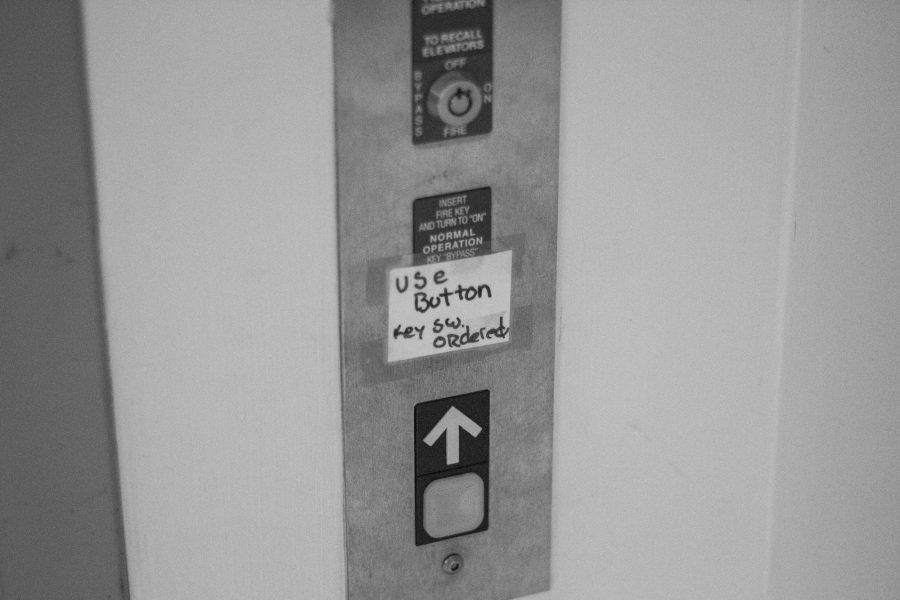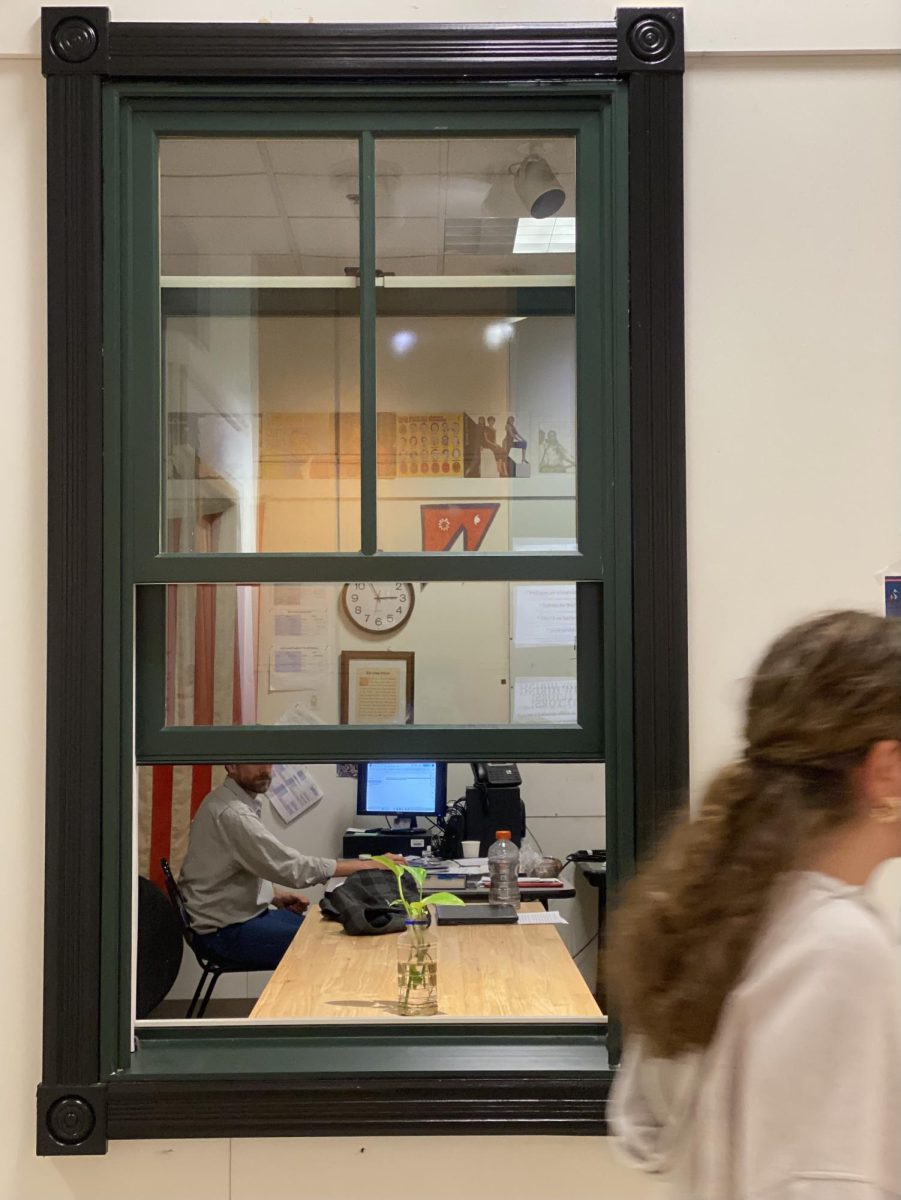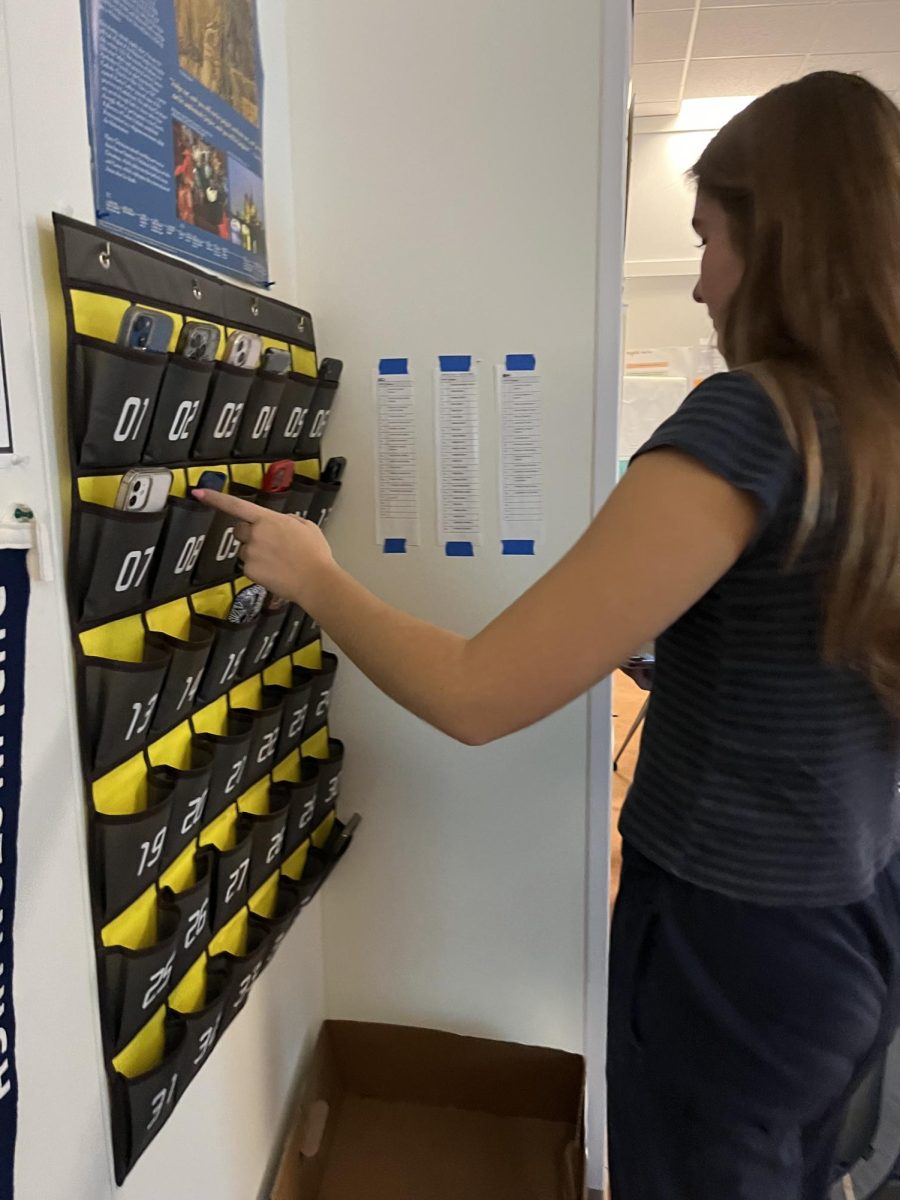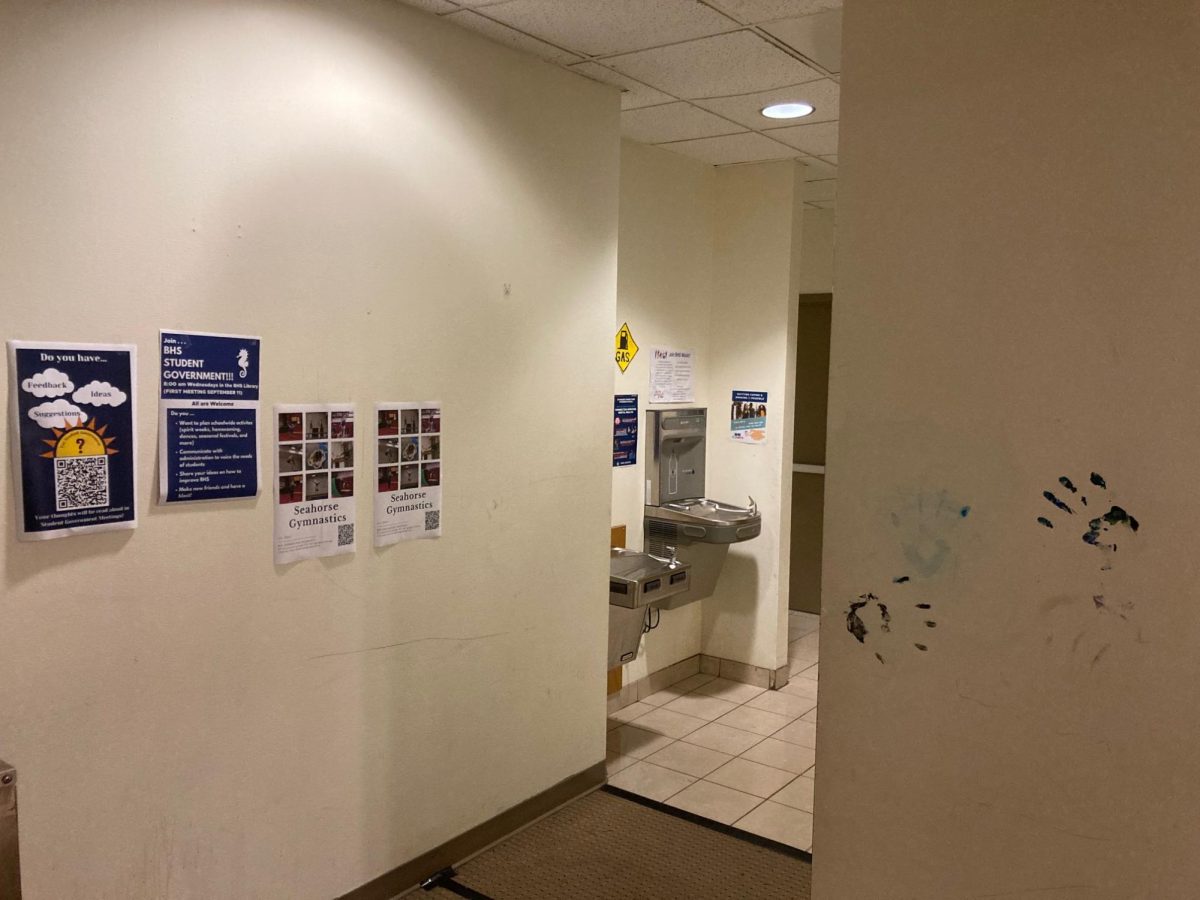For Seamus Stein to get to class, he has travel up broken elevators, outdoors and up steep ramps. The Burlington High School building, built in 1956, is falling apart and no longer ADA compliant.
The Burlington School Board toured the high school in 2013 along with Karen Downey, the District Occupational Therapist and Lindsay Foote, the District Physical Therapist. The group accessed many problems with ADA compliance alongside possible solutions. None of the solutions suggested have been enacted.
Among the concerns in A Building are the constantly malfunctioning elevators, which are hard to find and need a key. The ramp to the main entrance is uncovered and exposed to the elements, potentially making it slippery during winter time. There is no easy access to the auditorium, as it is only accessible from the outside. Once in the auditorium, there is no clear path to a restroom.
All but one of the ramps between buildings are out of ADA compliance.
The sidewalk from the bus stop to the B Building entrance is potholed. For someone who is physically disabled to access the second floor of C Building, one would have to exit C Building and find another elevator to use. There is no emergency exit for wheelchairs in E Building, as the path from the building to the parking lot is unpaved.
The district concluded that the amount of time needed for a handicapped student to travel from A to E exceeded the time given, and E and C building should no longer be functional for classroom use.
For some, this is just a to do list. However, for Stein and others who are physically disabled, these problems are an everyday hardship. For example, going to the restroom from the second floor of C Building is a journey in itself.
“I would have to go to E Building using the ramp, go down to the outside floor using the elevator, then go outside.”

Seamus is also forced to travel outside inorder for him to get from advisory in C Building to Algebra in D Building. Stein’s mother, Kate, works at BHS as a substitute teacher.
“The outside paths are not safe,” she said. “They are decrepit.”
The lack of elevators is not the only problem, as the ones that are currently in place are not functional.
There is inadequate signage within the elevators. In the E elevator, all the numbers are off by one. Staff members have been forced to correct the elevators with Sharpies, as well as writing directions from the elevator.
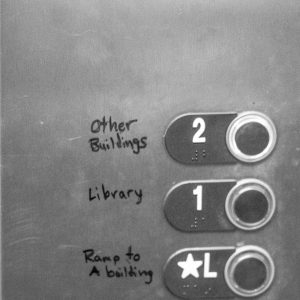
“When you’re familiar, you learn it,” Kate Stein said, “but sometimes you get in the elevator and you’re like, ‘Hmm, which one am I in?”
The elevators also malfunction, often times with students in them. In the latest instance, the B Building elevator stopped working while a paraeducator and their student were in it. The elevator was out for 25 minutes. The phone inside the elevator was also faulty, and the teacher did not know who to call on her cell phone.
After 25 minutes, the elevator began to work again.
Kate Stein has been leading the charge to put phone numbers inside and outside the elevator in case of malfunction.
“It’s the kind of thing where you don’t know you need staples until you’re out of staples,” she said.
Building Disrepair
In a report prepared by Engineering Ventures in 2014, the district notes that “It is likely that the structural systems met the requirements of the building code at the time of construction. Therefore, even if current standards are not met, the buildings are code compliant by the ‘Existing Buildings’ section of the current building code.”
Teachers and students, however, are finding more and more issues with the school, some of which have been disruptive to learning.
Ron MacNeil has a crack down the middle of his classroom floor. After years of attempting to get the problem solved, the crack was covered by the installation of tile flooring.
“It’s a temporary solution,” MacNeil believes.

Benjamin Roesch has been a teacher at BHS for 11 years. He has had a problem with pests in his class, specifically with ants and bees.
“It’s frustrating when I have 10 bees in the room, and I have to choose between closing the windows on a 80 degree day, or swatting bees.”
He has tried going through the proper channels to fix the problem, but he often times receives little or no response.
“There is a little bit of a struggle sometimes between like the latitude we have to deal with on our own, and how well the school can respond to our needs,” he said.

Roesch currently has a pile of dead ants on his windowsill. The school has been unresponsive in cleaning them.
“It’s a struggle to keep up with need. And I don’t necessarily feel like it’s anybody’s fault,” he said. “I’ve always felt that the custodians work their butts off. It’s just an old building with a lot of need.”
Time to Rebuild
Three approaches to renewing the BHS campus were drafted by Black River Design and presented to the board in 2014. Plan A called for minor changes to the entrance, as well as making the building ADA compliant and up to code. This was the cheapest option.
Plan B was intermediate in cost, and included keeping only the auditorium and the gym, demolishing everything else. The additions would be build in the field between the bus circle and the parking lot.
The final proposal, Plan C, was the most drastic. It included a complete demolition of the school, and rebuilding it where the baseball field currently is.
As of now, these plans have not seen the light of day. The main reason being timing, as the plans were proposed when the district was looking for a new superintendent.
However, there is still hope. The school board plans to ask voters to bond 27 million dollars for capital repairs all over the district. The total cost of repairs would reach about 65 million dollars, including the 25 million needed to bring BHS up to code.
The district has two options to consider when asking voters for a bond. The first would simply be to request a bond to cover the 65 million dollars in needed for the bare minimum of repairs.
The second option would be to first ask the voters for the money to cover all repairs except the ones necessary at BHS. The district would then gather public opinion on whether the public would be willing to fund the construction of a new school, just the bare minimum, or somewhere inbetween.
Despite problems being apparent, there is no easy solution. Creating a plan that taxpayers, students, teachers, and parents are happy with is not an easy task.
“Does it make sense to just pour money into the school to fix things for ten years?” Kate Stein asks, “Or should we look farther out and look at a building that could be green, a building that could be more conducive to 21st century learning, and a building that could be accessible to everybody? I don’t know.”
Editor’s Note: This article first appeared in print in October 2016.



